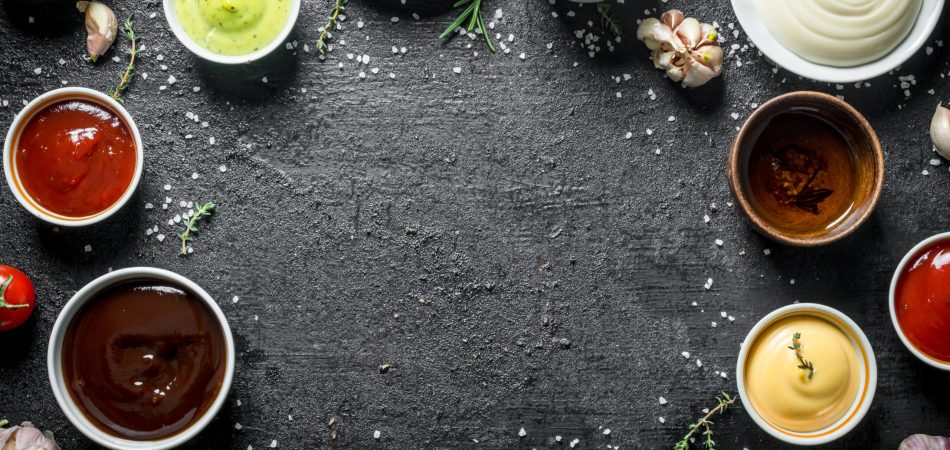
Sauces for All Palates: Catering to Diverse Tastes and Preferences
Sauces are culinary alchemists, transforming ordinary dishes into extraordinary culinary experiences. Whether used as a marinade, a topping, or a dipping sauce, they have the power to elevate flavors and delight the taste buds. In a world filled with diverse tastes and preferences, the art of creating sauces that appeal to everyone becomes a flavorful challenge. In this blog post, we’ll explore the magic of sauces and how chefs and home cooks can cater to diverse palates, offering options for every taste preference.
The Sauce Spectrum: Sweet, Spicy, Tangy, and More
1. Sweet Sauces: A Symphony of Sugars
Sweet sauces add a touch of indulgence to both savory and sweet dishes. From classic barbecue sauce with its molasses-infused richness to sweet teriyaki glazes, these sauces are a favorite among those with a sweet tooth. When catering to diverse tastes, consider offering options like honey mustard, mango chutney, or a balsamic reduction for a sophisticated sweetness.
2. Spicy Sauces: Igniting the Taste Buds
For those who crave heat, spicy sauces bring the fire to the table. From the smoky depth of chipotle sauces to the fiery kick of habanero-infused concoctions, there’s a spice level for every palate. Consider creating a hot sauce bar with options ranging from mild to scorching, allowing diners to customize their heat experience.
3. Tangy Sauces: A Zestful Twist
Tangy sauces provide a burst of acidity and brightness, cutting through richness and adding vibrancy to dishes. Options like tzatziki, lemon dill sauce, or a classic vinaigrette bring a refreshing tang that appeals to those who enjoy a zesty kick. These sauces work wonders with grilled meats, seafood, and salads.
4. Umami Sauces: Savory Elegance
Umami, the savory fifth taste, takes center stage in sauces like soy, miso, and Worcestershire. These sauces add depth and complexity to dishes, satisfying those who crave rich and savory flavors. Umami-rich sauces are versatile and can enhance everything from stir-fries to marinades for grilled proteins.
5. Creamy Sauces: Luxurious Indulgence
Creamy sauces, with their velvety textures and luscious flavors, offer a touch of luxury to a variety of dishes. Classic choices like Alfredo, hollandaise, and tzatziki provide a creamy canvas for pasta, eggs, or as a dip for veggies. Consider offering dairy-free alternatives to accommodate various dietary preferences.
Catering to Dietary Preferences
1. Vegetarian and Vegan Options
In a world where dietary preferences vary widely, creating sauces that cater to vegetarians and vegans is essential. Substitute traditional animal-based ingredients with plant-based alternatives. For example, a cashew cream sauce can replace dairy-based cream, and nutritional yeast can add a cheesy flavor to vegan sauces.
2. Gluten-Free Offerings
Gluten sensitivity and celiac disease are considerations for many individuals. When crafting sauces, opt for gluten-free thickeners and be mindful of soy sauce and other condiments that may contain gluten. Cornstarch, arrowroot, or gluten-free tamari are great alternatives for those seeking gluten-free options.
3. Allergen-Free Alternatives
Food allergies are a serious concern for many people. It’s crucial to be aware of common allergens such as nuts, dairy, and shellfish when creating sauces. Offering allergen-free alternatives, clearly labeling ingredients, and providing detailed allergen information can help ensure a safe dining experience for everyone.
Global Inspirations: Embracing Culinary Diversity
1. Mediterranean Flavors
Mediterranean cuisine is celebrated for its use of olive oil, lemon, garlic, and fresh herbs. Create versatile sauces like tzatziki, chimichurri, or a lemon garlic aioli to bring the vibrant flavors of the Mediterranean to a variety of dishes.
2. Asian Influences
Asian cuisines offer a rich tapestry of flavors, from the umami of soy sauce to the heat of chili paste. Explore options like teriyaki, hoisin, or peanut sauce to infuse dishes with the diverse tastes of Asia. Consider incorporating ingredients like miso, sesame oil, and ginger for depth and complexity.
3. Latin American Zest
Latin American cuisine is known for its bold and lively flavors. Create sauces that showcase the vibrancy of cilantro, lime, and chili peppers. Salsas, chimichurri, and mole are perfect examples of sauces that capture the essence of Latin American zes
4. Middle Eastern Delights
Middle Eastern sauces, such as tahini-based dressings, harissa, or pomegranate molasses, bring a delightful combination of sweet, tangy, and savory notes. These sauces work beautifully with grilled meats, roasted vegetables, and salads.
Explore Flavor Through Sauces
In the culinary world, sauces are the maestros orchestrating a symphony of flavors. By embracing the diversity of tastes and preferences, chefs and home cooks alike can create sauces that cater to a wide range of palates. From sweet and spicy to creamy and tangy, the key is to offer a variety of options that allow diners to tailor their culinary experience. The Kings Sauce is a garlic-butter sauce blended to perfection for use on seafood.
Check out The King’s Sauce blog to learn more about how to incorporate our sauces into meals at home!
